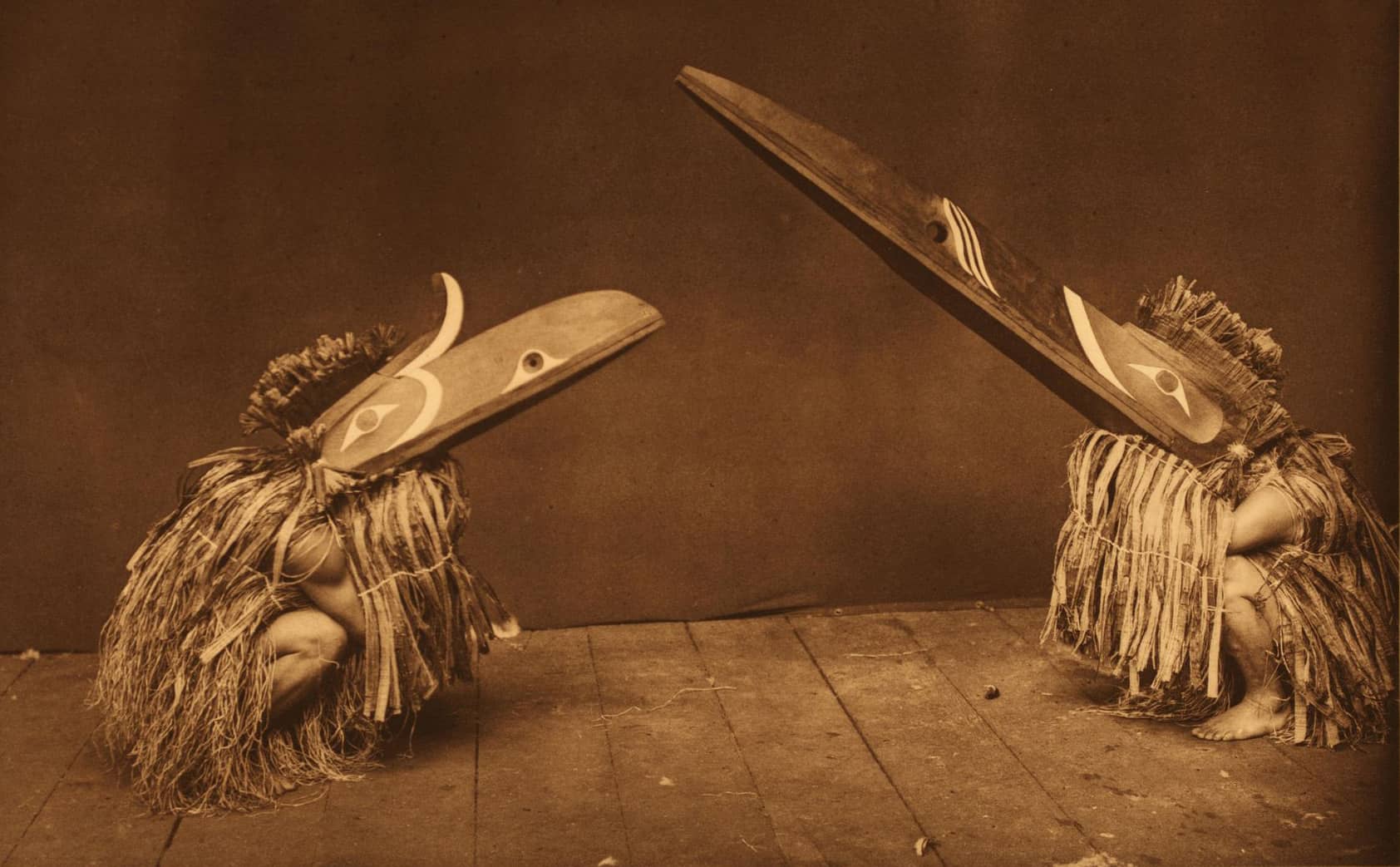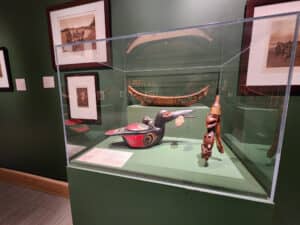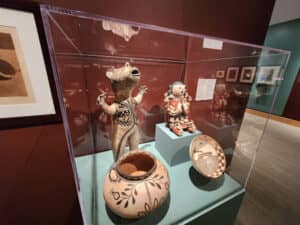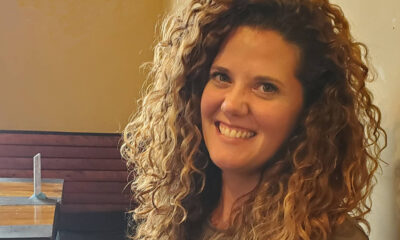New James exhibit pairs Native American photos, artifacts

Caitlin Pendola and Jason Wyatt, co-curators The James Museum of Western &d Wildlife Art, spent a year and a half researching and building the extraordinary new exhibit The Stories They Tell: Indigenous Art and the Photography of Edward S. Curtis.
Opening Saturday, the exhaustively-researched exhibition pairs craftwork from 22 Native American tribes with “photogravures” – early, sepia-toned photographic prints – by pioneering western photographer Edward S. Curtis.

Edward S. Curtis, Girl and Jar – San Ildefonso, 1905.
It works like this: What you see in the framed Curtis images, which depict pottery, basketry, textiles and masks in the hands (and on the bodies) of turn-of-the-century Native Americans, are right there in front of you, too, in display cases.
“We really wanted to bring context to the Curtis works,” Pendola explains. “His work gives us a snapshot in time, and these objects continue that story. We really tried to find objects that corresponded well with the prints.”
It’s all about context – many of the basket and pottery case include, placed right next to the vintage works, baskets and pots created contemporarily, in the old style, sometimes by artist-descendants of the original tribespeople. “They’re making old new again,” Wyatt says.
By the time Curtis took his photos, in the early 20th century, it was a commonly held belief among non-natives that Native American culture would soon disappear. “From the 1880s through the 1930s,” Wyatt explains, “there was an ‘Indian craze,’ where people wanted to collect everything Native American.
“So they were like ‘Let’s take advantage of that. You’ve taken advantage of us for so long, we’re going to do the same thing to you.”

Photo by Bill DeYoung.
Therefore, while many of the 100-and-so-year-old artifacts in The Stories They Tell were functional, the majority were created specifically for the tourist trade.
“By 1870,” adds Wyatt, “they’d moved on to pots and pans like everyone else. They got them from traders. They were making them for the white market.”
Curtis used living Native Americans, and freshly-created craftwork, to save for posterity images of what he thought was a dying culture.
The Curtis photogravures were donated to the James Museum by local collector Robb Hough (there are nearly 1,000 of them in the museum’s permanent collection). Likewise, the other pieces were obtained through loans from seven national museums and three private collections.

Photo by Bill DeYoung.
Although Native American peoples are prominent in his best-known works, Curtis was also an early (and renowned) landscape photographer. Many of these stunning pieces – depicting a rugged west – are part of The Stories They Tell.
“They’re beautiful,” Wyatt says, “and that’s our argument. We don’t necessarily look at the Curtis works as ethnographic pieces – they’re really art pieces. The way he’s using shadow and light, the way he’s positioning people. They’re very artistic.
“They’re more artistic than they are anthropological. He wasn’t so much depicting people as they were – he’s looking back and romanticizing it. Every artist does.”
For information on the exhibit, and The James Museum of Western & Wildlife Art, click here.

Co-curators Jason Wyatt and Caitlin Pendola. Photo by Bill DeYoung.







